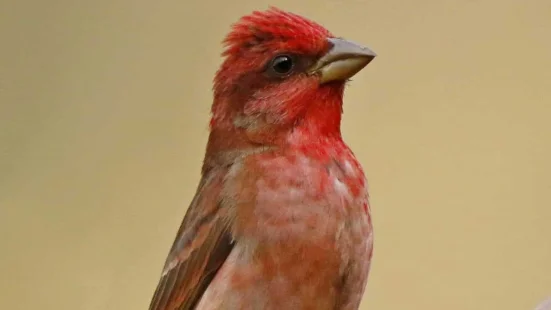To buy our online courses: Click Here
Scientists from the Bombay Natural History Society (BNHS) have recorded the presence of new bird in the eastern Himalayas, taking India’s avian biodiversity count to a total of 1,340 species. The rare sighting of a three-banded rose finch was made in the hilly, coniferous forests of the Sala Pass in Arunachal Pradesh on February 8, about 3800 meters above sea level.
This particular finch, experts said, is a resident of southern China and has also been seen as a vagrant in Bhutan. “There are multiple species of finches that migrate from south-western China to India during the winter. We are currently in the midst of a study to determine the population distribution of 10 kinds of finches in Sikkim and Arunachal Pradesh, and assess the impact that climate change may have on them,” said Girish Jathar, a lead author on the upcoming paper.
While observing a flock of white-browed rose finch (a common bird in the area), the researchers happened to notice a male three-banded rose finch among their study population. “It is a very distinctive bird, especially the male. It’s a small creature but its red and gray colours stood out and we decided to take pictures. We realised that there were actually a male and female both,” Jathar added.
An assessment of the photographs earlier this week confirmed this was a new species for India. Since 2016, India’s tally of avian biodiversity has grown by 104 new species. Experts said that this finding underscores the importance of conducting more intensive wildlife surveys in the eastern Himalayas, which are still relatively under-explored.
Atharva Singh, another lead author of the paper, said that little is known about the ecology of this species. “The Three-banded Rose finch may be using the high altitude temperate coniferous forest of Arunachal Pradesh as a passage while migrating from China to Bhutan. Thus this landscape is a potential corridor for this species,” he speculated, adding that the team is also on the lookout for the species in Sikkim, at similar altitudes. So far they have not seen it anywhere else.





